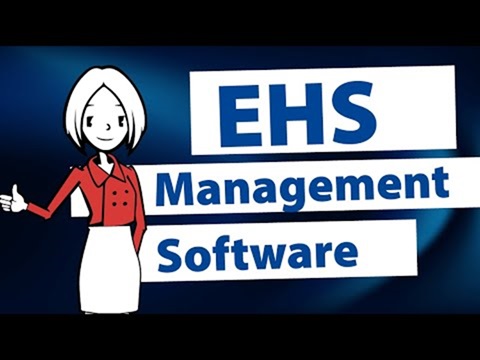The worldwide spending on EHS (Environmental, Health, and Safety) software is expected to reach $3.1 billion by 2028. This shows how important this type of software has become. More companies are moving their systems to digital tools, but what are the main reasons for doing this?
This article explains what EHS software is, why it’s such a valuable tool for businesses, and the five main reasons why many companies prefer to use a unified, cloud-based EHS software system.
What is EHS Management Software?
To understand EHS software, we first need to understand EHS management itself. EHS management is a system businesses use to handle their environmental, health, and safety responsibilities. This includes keeping workers safe, protecting the workplace, and caring for the environment. Companies set up specific plans, tasks, and goals to manage how they follow these important principles.
Let’s look at the three parts of EHS and their goals:
- Environmental:
This part focuses on how a business affects the environment. Most companies aim to lower their impact by managing waste, chemicals, air pollution, and water use. - Health:
This includes systems that support and protect the health and well-being of workers. It covers areas like workplace health programs, hygiene, wellness, and ergonomics. - Safety:
This involves setting up programs to spot and reduce risks that could cause injury. It includes checking for dangers, managing risk, and learning from past incidents to prevent them from happening again.
In addition to these, Quality and Sustainability are often part of EHS practices, even though they’re not in the acronym.
- Quality:
This ensures that a company delivers products or services that meet certain standards, are consistent, and reliable. - Sustainability:
This focuses on making sure that a company uses resources responsibly and continues to operate in a way that considers environmental, social, and governance concerns.
EHS management software helps put all of this into action. It supports the systems that define roles, processes, and responsibilities. It makes daily work easier to repeat and track, improves access to information, and helps keep everything organized and efficient.
Why Is EHS Management So Important?
Like many parts of modern business, EHS management relies heavily on data. Whether it’s written records or digital reports, data plays a key role. Using digital tools changes how this data is collected, stored, and used — and this can improve the entire system.
One major benefit is that EHS software creates one central place for all EHS data. Instead of using paper files that are hard to find later, all the information is available to the right people in real time. This makes data easier to collect, improves its quality, and helps the whole system work better.
Also, mobile-friendly solutions let workers enter and review data from anywhere, at any time. This speeds up data sharing and improves how the whole organization sees and responds to EHS matters. It also reduces the time workers spend on paperwork, and gives them the tools they need to make smart decisions quickly.
Who Should Use EHS Software?
To manage EHS well, a company first needs to understand the risks it faces. Each part of EHS is about finding and dealing with risks to workers and the community. Simply put, if your company can identify risks, then it can benefit from a solid EHS program that helps handle those risks.
As EHS rules become more complex, professionals often turn to EHS software to help them check their compliance and fix any problems. In today’s fast-changing world, clear reporting isn’t just useful for following laws — it also helps businesses better understand how their EHS efforts are working.
To stay ahead of new risks, companies need strong change management, regular training, and clear compliance systems. By using smart digital tools, businesses can become more flexible and better prepared for whatever comes next.
Five Main Reasons to Choose Unified, Cloud-Based EHS Software
- Fewer Data Silos and Better Integration
Even companies that no longer use paper might still struggle with disconnected systems. When different departments use different software, it creates silos that make data harder to access and use. A unified EHS system brings everything together, making it easier for workers to get the information they need no matter where they are. This improves teamwork, speeds up processes, and helps create a better work environment.
- Improved Efficiency and User Experience
Using one system across the whole company means that different tasks can be combined into easier workflows. This saves time and helps workers focus on what matters most. The best EHS systems are simple to use and work well across desktops, mobile devices, and other apps, creating a smooth experience for everyone.
- Higher Employee Engagement
Good EHS software gives workers more control and lets them take part in improving safety. With tools that show real-time data and results, workers can see the effects of their efforts right away. This encourages people to stay involved and take safety seriously.
- Better Compliance
EHS laws and rules change quickly. It can be hard to keep up without the right tools. EHS software keeps all compliance information in one place, making it easier for staff to find and review. It also helps by alerting the right people about new changes and keeping records that prove the company is following the law. This can prevent fines and protect the company’s reputation.
- The Benefits of True Cloud-Based Software
Not all EHS software providers offer a full cloud experience. Those that do provide key benefits like faster updates, better security, and the ability to grow with your company. True cloud software always runs the latest version, which means less downtime and no need for long, expensive updates. Because everyone uses the same version, the total cost of owning the software stays low, and companies stay up to date with the latest tools and features.










